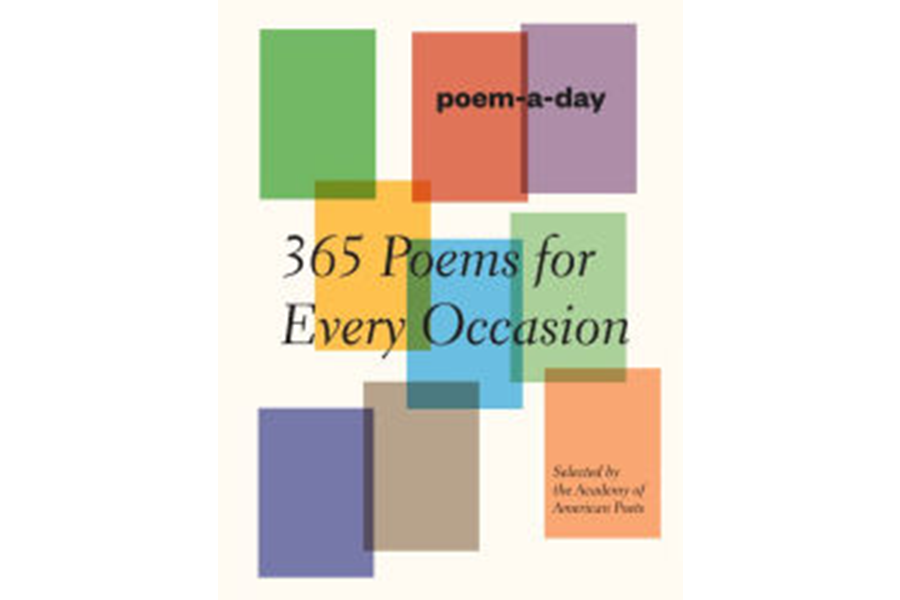Why I read a poem a day
Loading...
Last April, after I published an essay about poetry as part of National Poetry Month, an editor told me he’d often thought that the world would be a better place if we had a poem delivered to our doorstep each morning instead of a newspaper.
As a newspaperman, I’m not ready to discourage readership of each day’s edition, but maybe there’s something to be said for reading a newspaper and a poem each morning.
All of which has led to a small experiment. In an effort to keep a little poetry in my life long after National Poetry Month had passed, I resolved to read at least one poem a day after scanning the newspaper over breakfast. Thanks to three free online poetry-in-your-inbox services, it’s been an easy resolution to keep.
Many public radio listeners are familiar with “The Writer’s Almanac,” a five-minute segment hosted by Garrison Keillor that airs on lots of stations around the country. Each day’s edition includes a few tidbits about literary anniversaries, along with a short poem that Keillor recites. Fans can also have the text of each episode emailed to them every day, along with a link to the broadcast version. Check it out at writersalmanac.org.
The Academy of American Poets has its own poem-day feature, appropriately called "Poem-a-Day." Launched during National Poetry Month in 2006, Poem-a-Day highlights new and previously unpublished poems by contemporary poets on weekdays and classic poems on weekends. On weekdays, poems are accompanied by exclusive commentary by the poets. "Poem-a-Day" is also offered to newspapers across the country, but subscribers can sign up for the free email version at www.poets.org.
Ted Kooser, former poet laureate of the United States, offers a similar service through his “American Life in Poetry” series, though it’s a weekly, rather than a daily, feature. Kooser briefly introduces each week’s poem, offering a little bit of information about the selection, the writer, and books where readers can turn if they want more work from the featured poet. Kooser offers the series for free to any newspaper that wants it, but if your local paper doesn’t run it, you can also sign up for email delivery at americanlifeinpoetry.org. The service is sponsored by The Poetry Foundation, Library of Congress and the University of Nebraska at Lincoln.
Since subscribing to both poetry services last April, I’ve enjoyed getting a daily dose of verse each morning, something I probably wouldn’t have indulged if I relied on my own initiative to fetch some poems from the shelf. For various reasons, poetry isn’t something that many folks regularly make time for, even if they count themselves as avid readers.
Reading at least one poem a day has also been like an intellectual vitamin, giving me a small dose of literature even on busy days when I can’t get to the novels and nonfiction on my nightstand.
Another windfall has been connecting with a lot of talented poets I wouldn’t otherwise know about. Poetry being what it is, even the best talents in the genre can labor in relative obscurity. A recent edition of “Writer’s Almanac,” for example, featured “The Ice Man,” in which poet Jeanne Lohmann reflects, among other things, on the simple childhood pleasure of savoring chipped ice in summer, as she and her companions “lifted the freezing melt/ to our hot and eager tongues.” You can read the poem yourself here, and listen to Keillor’s performance.
Maybe the biggest benefit of reading a poem every morning has been the chance to see the familiar in new ways. Not long ago, Kooser’s column included “Lessons,” in which poet Vanessa Stauffer considers the magical possibilities of paper. An excerpt:
To crease a sheet of paper is to change
its memory, says the origami
master: what was a field of snow
folded into flake. A crane, erect,
structured from surface. A tree
emerges from a leaf – each form undone....
You can read the whole poem here.
Last April, I wondered if I could remind myself to read a poem each morning. Now, deep in summer, I wonder if I could ever do without it.
Danny Heitman, a columnist for The Advocate newspaper in Louisiana and an essayist for Phi Kappa Phi Forum, is the author of “A Summer of Birds: John James Audubon at Oakley House.”








